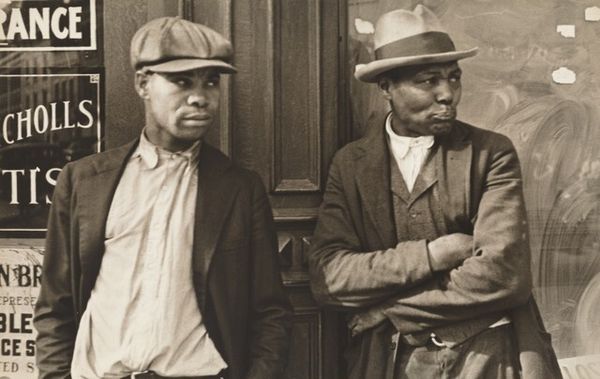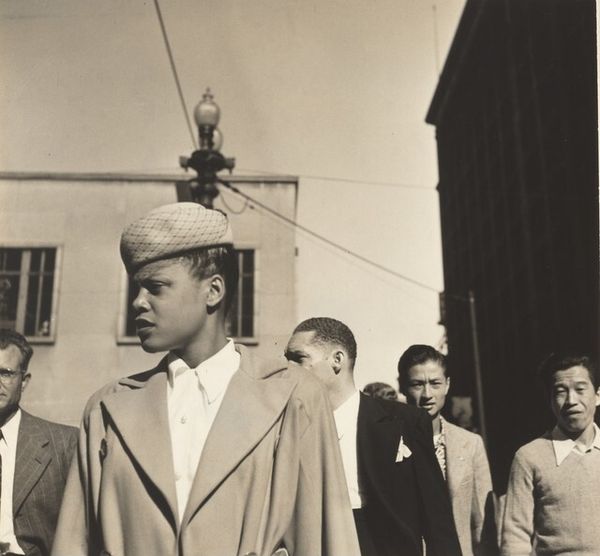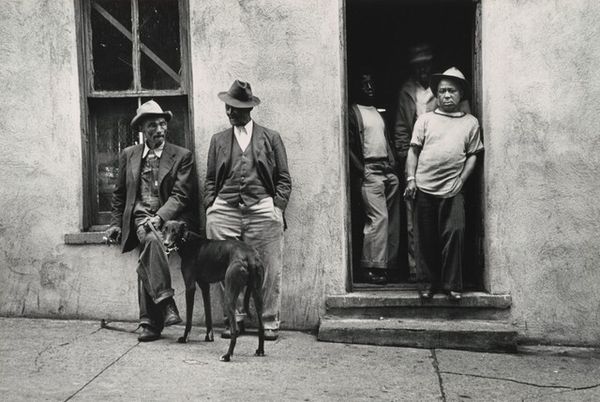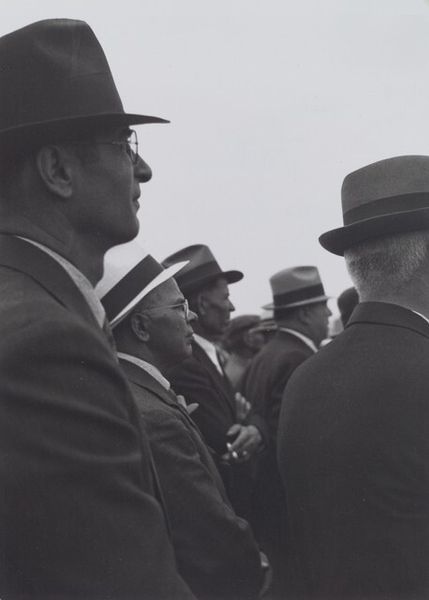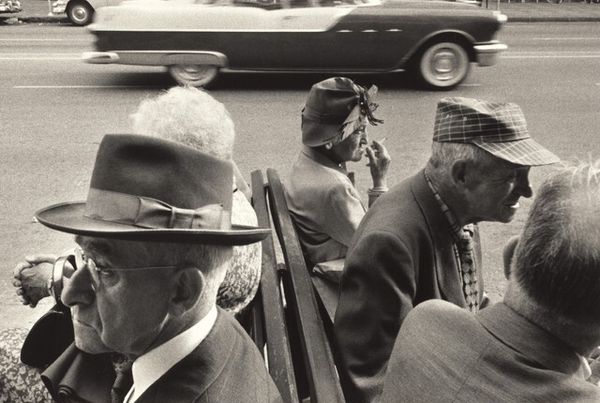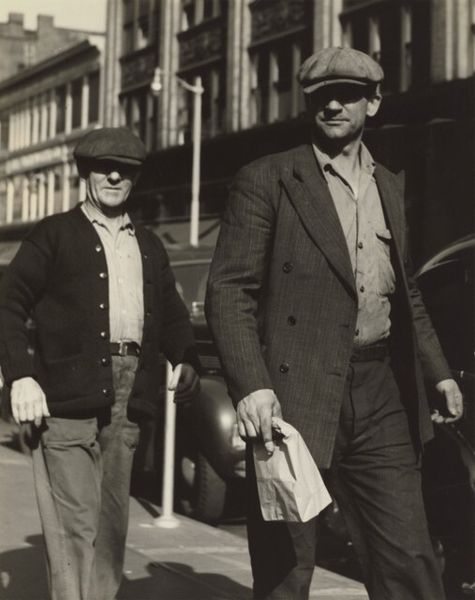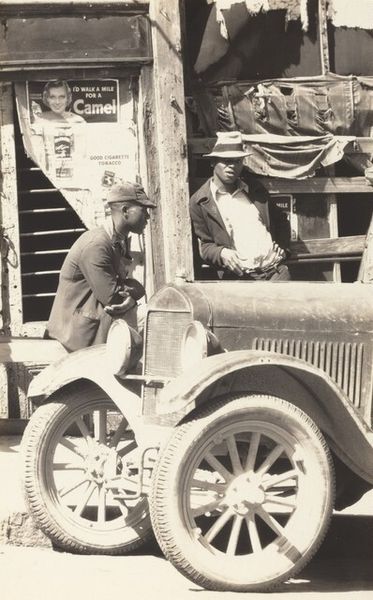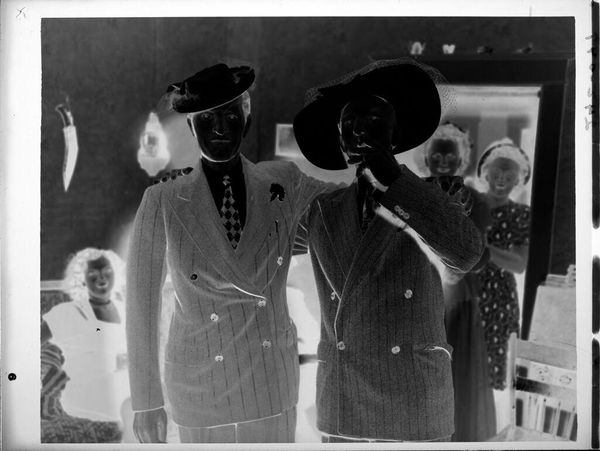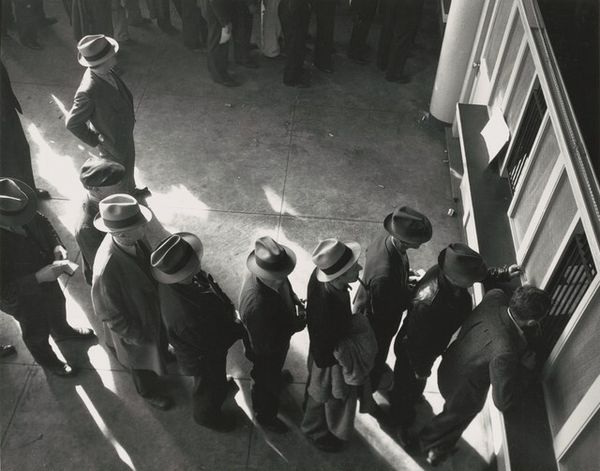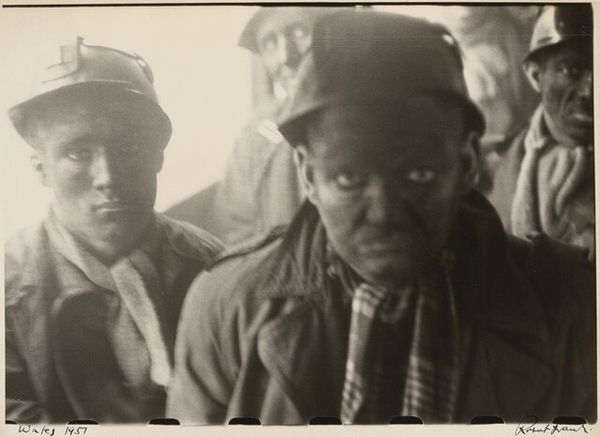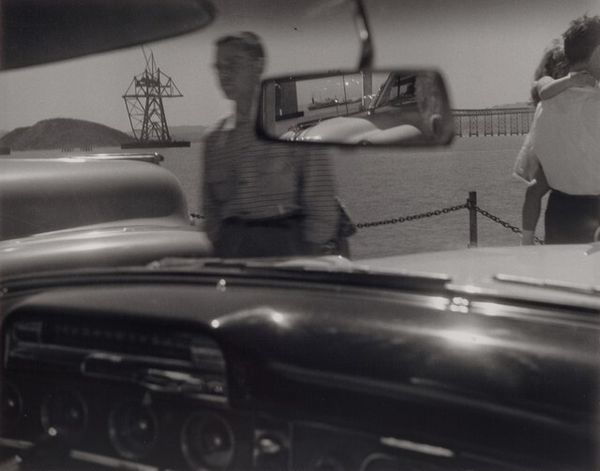
photography, gelatin-silver-print
#
portrait
#
black and white photography
#
black and white format
#
street-photography
#
photography
#
historical photography
#
black and white
#
gelatin-silver-print
#
monochrome photography
#
ashcan-school
#
genre-painting
#
modernism
#
realism
Dimensions: image/sheet: 27.94 × 35.31 cm (11 × 13 7/8 in.)
Copyright: National Gallery of Art: CC0 1.0
Editor: This gelatin-silver print from 1947, titled "Greyhound Bus Terminal, West 50th Street, New York City" by Esther Bubley, feels so immediate. I’m struck by how tangible the scene feels, almost like I’m there in the terminal with these folks. What's your read on this piece? Curator: Well, considering it was made in 1947, just after the Second World War, it’s interesting to examine the materials and production. The Greyhound bus was, at that point, the people’s transportation. Mass production impacted fabric for suits, the very clothes people were wearing, defining a kind of social leveling via shared experiences. The photograph is itself a reproducible item; a multiple that is consumed as an image rather than experienced first-hand. Editor: That's a really interesting way to look at it. I was focused on the individuals, but you’re making me consider the materials surrounding them. Do you think the gelatin-silver process itself contributes to this feeling of shared experience? Curator: Absolutely. Gelatin-silver prints were the standard for mass media at that time, think newspapers, magazines. It links the photograph to information dissemination and reinforces the photograph's democratic, if mediated, accessibility to its subject. Notice, too, how Bubley hasn’t glamourized her subjects. These men are simply *there,* waiting. She's interested in representing an authentic moment of transit within the wider flows of labor and materials that the bus terminal facilitates. How does that strike you? Editor: I never considered that link to mass media. I was just seeing individuals, not participants in a larger, almost mechanical process. It does change the feeling, it's more of an industrial process with a human element, and not a personal depiction. Thank you. Curator: Indeed. It encourages us to think about how technological reproduction influences the construction and consumption of the images of daily life. Food for thought!
Comments
No comments
Be the first to comment and join the conversation on the ultimate creative platform.
